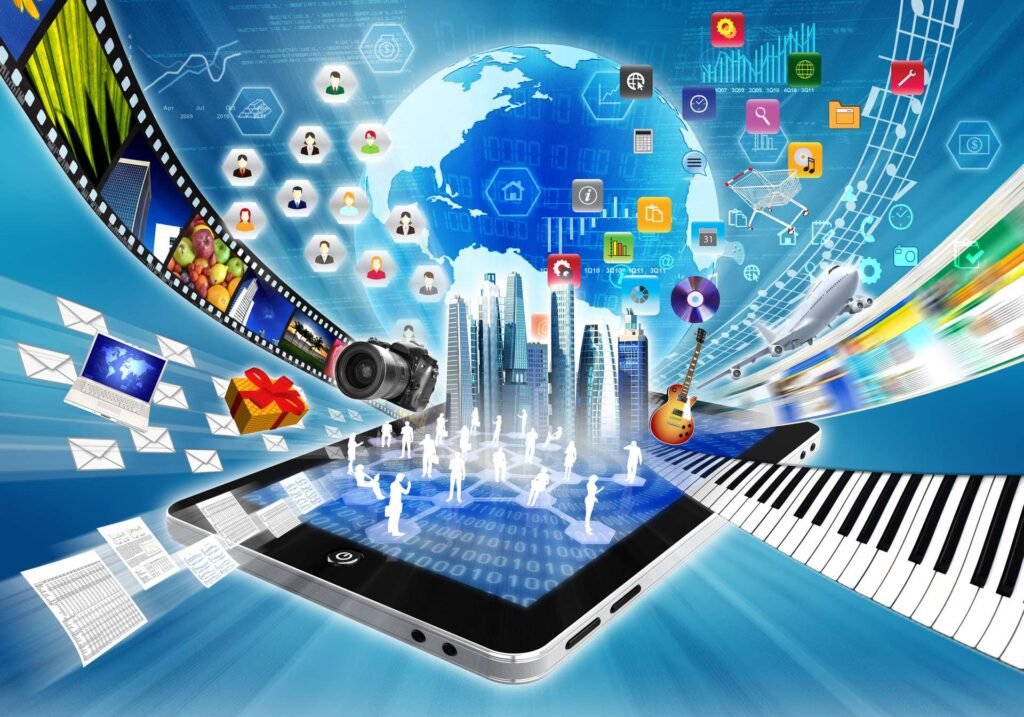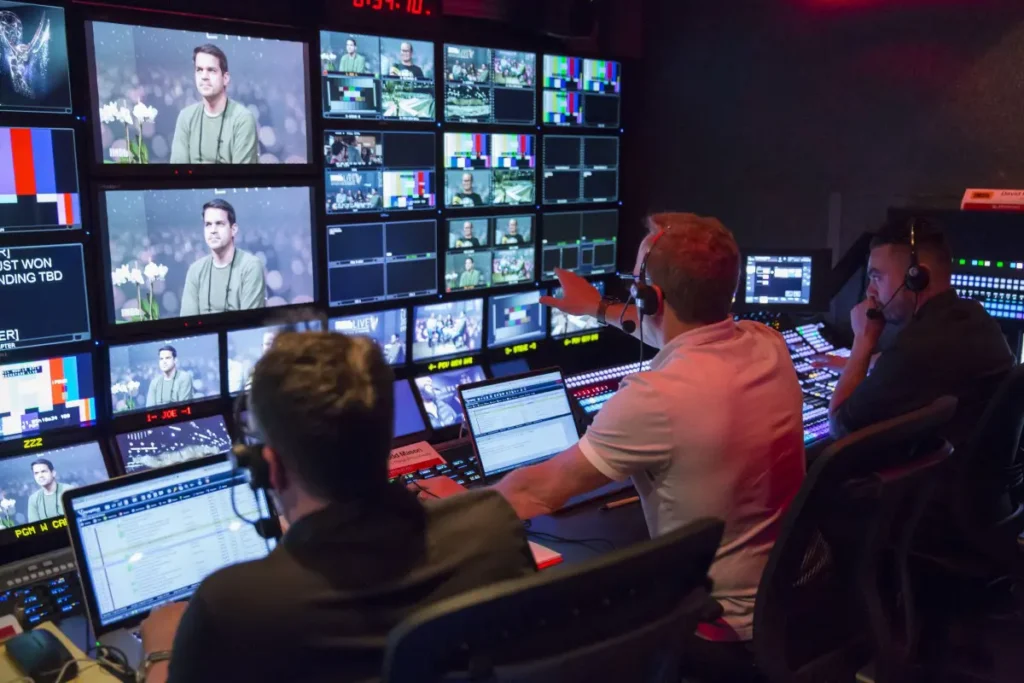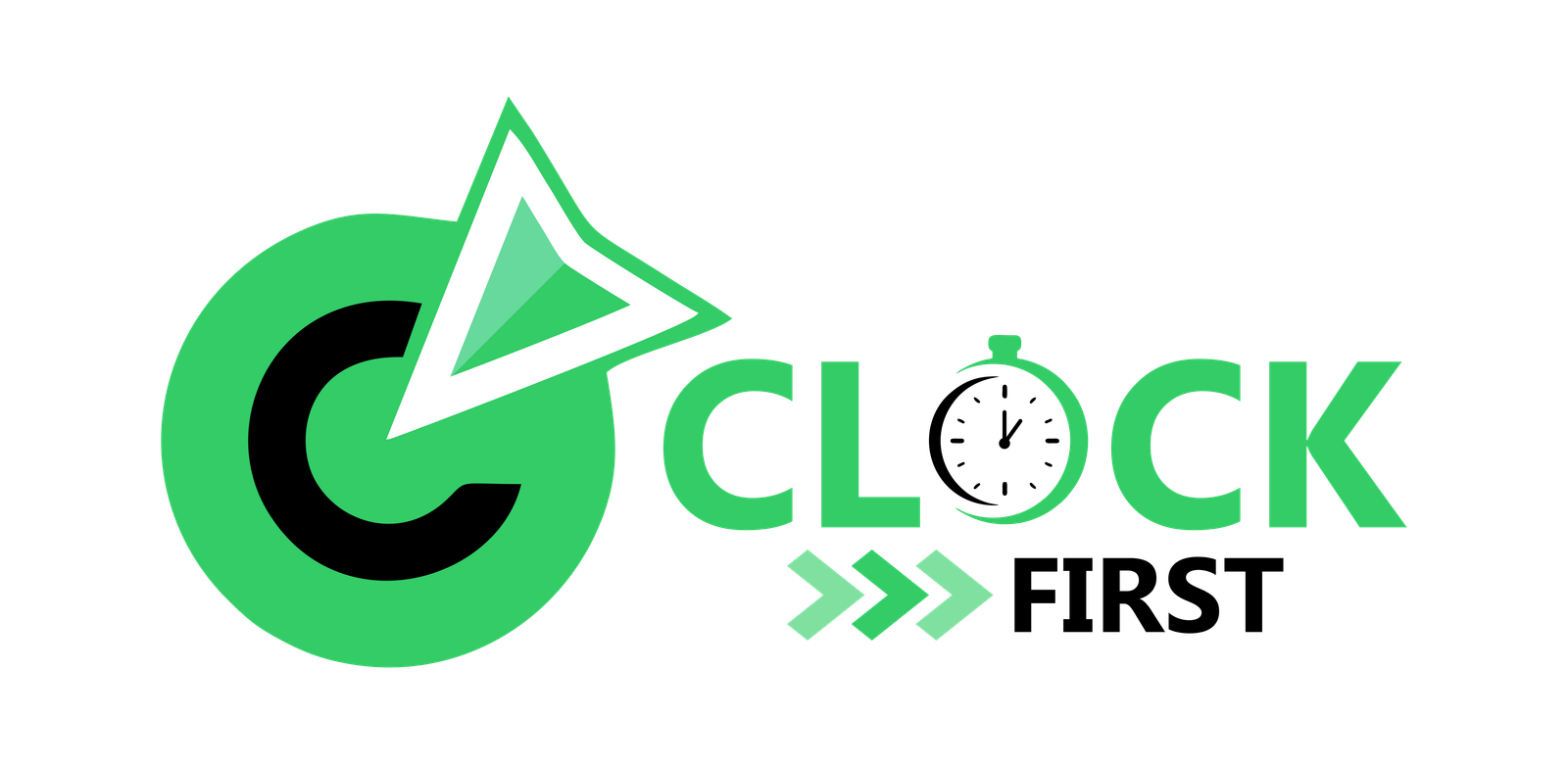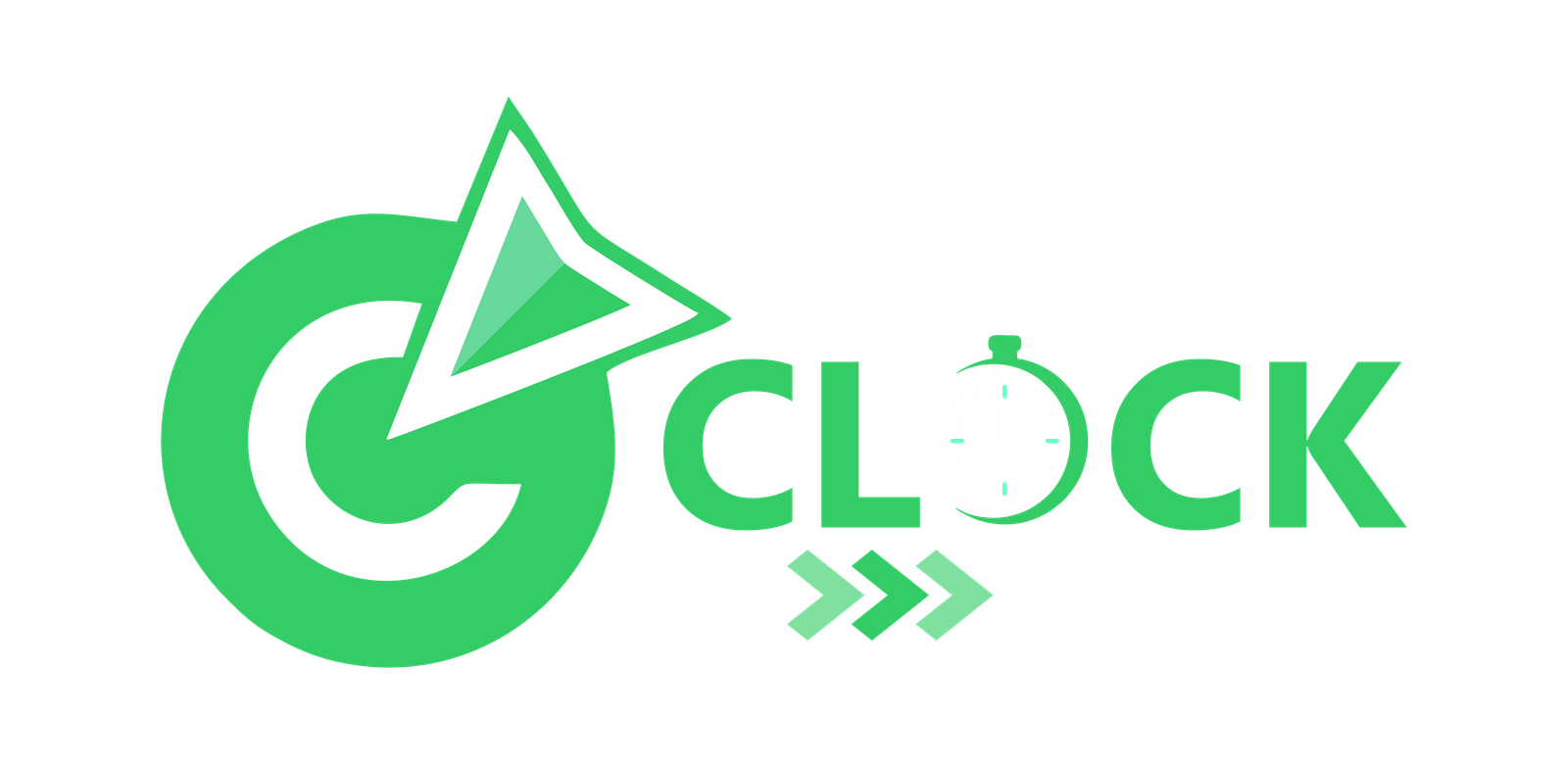Media Technology what is and its Uses
Media technology has become integral to our daily lives, revolutionizing how we communicate, access information, and consume entertainment. This post examines media technology, its various forms, and its general uses in today’s digital age.

Introduction
In our increasingly interconnected world, media technology is vital in determining how we engage with the world around us. From traditional print media to modern digital platforms, media technology encompasses various tools and channels that facilitate communication, information dissemination, and entertainment. This article will explore media technology, its types, uses, advantages, challenges, and future trends.
Understanding Media Technology
Definition of Media Technology
This technology refers to the tools, systems, and platforms used to create, transmit, store, and manipulate media content. It encompasses hardware and software components that enable media production, distribution, and consumption. Examples of media technology include printing presses, cameras, televisions, radios, computers, smartphones, and the Internet.

Evolution and Importance of This Technology
Media technology has evolved significantly over the years, driven by advancements in science, technology, and societal needs. From the 15th century’s invention of the printing press through the 21st century’s advent of digital media, each technological milestone has revolutionized how we communicate and share information. Media technology has played a pivotal role in shaping public opinion, disseminating news, and fostering cultural exchange on a global scale.
Types of Media Technology
Media technology can be broadly categorized into three main types: print, broadcast, and digital.

Print Media
Print media encompasses any form of media physically printed on paper or other tangible surfaces. These include newspapers, magazines, books, brochures, and posters. Print media has a long history and has been a primary means of communication and information dissemination for centuries. While digital media has gained prominence, print media remains relevant and is a trusted source of news and knowledge.

Broadcast Media
Broadcast media is transmitting audio and visual content to a broad audience electronically.
Includes television and radio broadcasting. Television has been a dominant form of broadcast media, delivering news, entertainment, and educational programs to millions of viewers worldwide. On the other hand, radio offers audio content, including music, talk shows, and news broadcasts. Both television and radio have been instrumental in shaping popular culture and providing a platform for mass communication.
Digital Media
Digital media is the modern media tech that utilizes digital signals and platforms for content creation, distribution, and consumption. It encompasses various forms, such as websites, social media platforms, streaming services, podcasts, and online news portals. Digital media has grown tremendously in recent years, providing individuals with instant access to information, entertainment, and social interaction. It has transformed how we consume content, enabling personalized experiences and interactive engagement.
Uses of Media Technology
This technology serves many purposes and fulfills various needs in our society. Let’s explore some of the critical uses of media technology:
Communication and Information Sharing
One of the primary uses of media tech is facilitating communication and information sharing. Through various channels like television, radio, newspapers, and the Internet, we can stay informed about local and global events, access news updates, and communicate with individuals from various nations. Social media platforms have further revolutionized communication, allowing instant sharing of thoughts, ideas, and multimedia content.
Entertainment and Leisure
This tech provides a vast array of entertainment options for individuals. Television shows, movies, online streaming platforms, music streaming services, and video games offer endless hours of entertainment and leisure. These forms of media help us relax, unwind, and immerse ourselves in captivating storytelling and artistic expressions.
Advertising and Marketing
Media tech has transformed the advertising and marketing industry. With the advent of digital media, businesses can now reach a broader audience and target specific demographics more precisely. Online advertisements, social media campaigns, influencer marketing, and search engine optimization (SEO) techniques have become integral to promoting products and services effectively.
Education and Learning
Media tech has revolutionized the field of education. Online learning platforms, educational apps, and interactive multimedia content have made learning more accessible and engaging. Students can access educational resources, attend virtual classes, collaborate with peers, and participate in interactive learning activities. Media technology has expanded educational opportunities beyond traditional classrooms, enabling lifelong learning for individuals of all ages.
Social and Political Impact
Media tech plays a significant role in shaping social and political discourse. It allows people to express their opinions, advocate for social causes, and raise awareness about important issues. Social media platforms have empowered people to participate in discussions, share perspectives, and organize movements for social change. Additionally, media technology lets us stay informed about political developments, elections, and policy-making processes.
Advantages of Media Tech
Media tech offers several advantages that have transformed our lives and society. Let’s explore some of the key benefits:
Accessibility and Reach
This technology has made information and content more accessible than ever before. We can access news articles, videos, music, and other media worldwide with clicks or taps. This accessibility has bridged geographical barriers, enabling the global sharing of diverse perspectives and cultural exchange.
Interactivity and Engagement
Digital media technology fosters interactivity and engagement. Users can actively participate in discussions, share feedback, and contribute content through social media platforms and interactive websites. This interactivity has democratized media, allowing individuals to have a voice and be active participants rather than passive consumers.
Convenience and Flexibility
This technology provides convenience and flexibility in accessing content. We can choose how, when, and where we consume media. Whether it’s streaming our favorite TV shows on-demand, listening to podcasts during our daily




